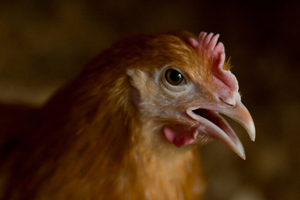Prevention and control of feather pecking in layers

ABSTRACT: Feather pecking (FP) in laying hens is an important economic and welfare issue. Researchers in the Netherlands and United Kingdom carried out a review of literature on the causes of FP in laying hens, with the aim of establishing the underlying principles behind it.
By: TB Rodenburg, MM van Krimpen, IC de Jong, EN de Haas, MS Kops, BJ Riedstra, RE Nordquist, JP Wagenaar, M Bestman and CJ Nicol
With the ban on conventional cages in the EU from 2012 and the expected future ban on beak trimming in many European countries, addressing this welfare issue has become more pressing than ever.
FP is affected by many different factors and any approach to prevent or reduce FP in commercial flocks should acknowledge that fact and use a multifactorial approach to address this issue. Two forms of FP can be distinguished: gentle FP and severe FP.
Severe FP causes the most welfare issues in commercial flocks. It is clearly related to feeding and foraging behaviour and its development seems to be enhanced in conditions where birds have difficulty in coping with environmental stressors. Stimulating feeding and foraging behaviour by providing high-fibre diets and suitable litter from an early age onwards, and controlling fear and stress levels through genetic selection, reducing maternal stress and improving the stockmanship skills of the farmer, together offer the best prospect for preventing or controlling FP.
| This is an abstract from the World ‘s Poultry Science Association’s Journal. To purchase report options: |













